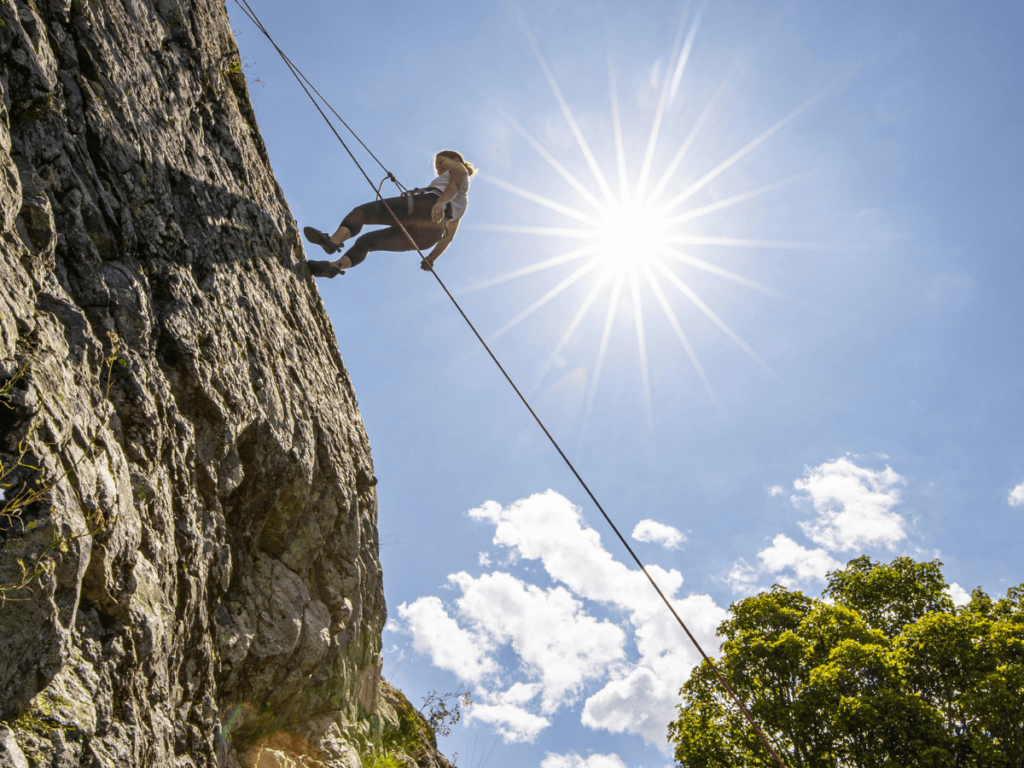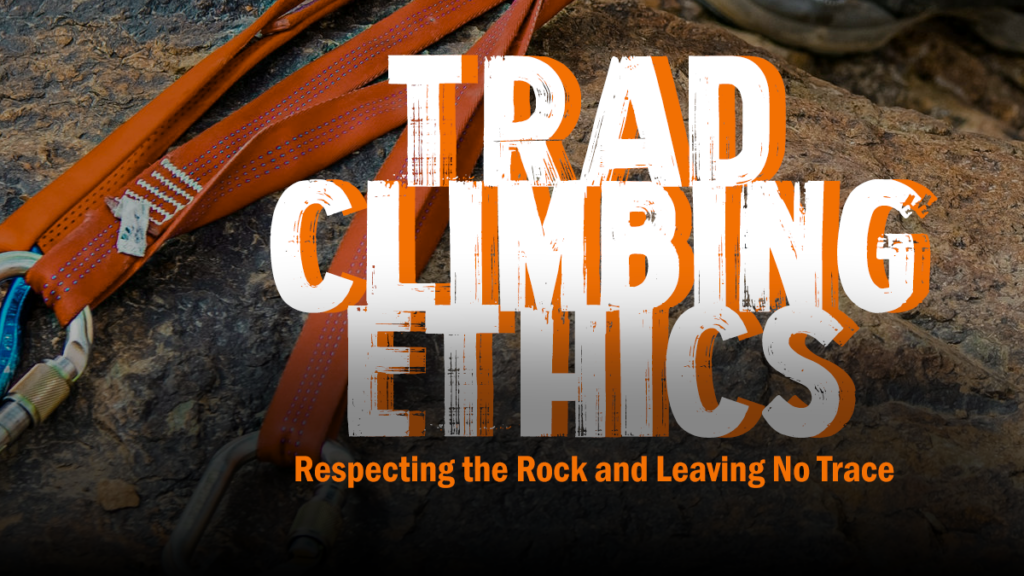Some people trad climb because they prefer the ethics of it over sport climbing or bouldering, while others do it because their local sport climbing crag is simply overpopulated. With sport climbing, there must be a bunch of fixed gear on the walls and safe landing zones for bouldering. Both require altering the environment in some way. Trad climbing only needs two bolts drilled into the wall per pitch: the anchors (and sometimes they don’t even have those).
Traditional climbing (trad climbing) is ascending a rock and placing protection (pro) into weaknesses (cracks) of the wall. This form of climbing, placing your own protection and removing it after, is the cleanest way to climb outdoors. It doesn’t require drilling into the rock, setting a bolt every ten feet, or clearing the vegetation from the bottom of a boulder to ascend.
Leave No Trace is the number one rule when outdoors, and when legends like Royal Robbins and Yvon Chouinard promoted this new “clean” style of trad climbing, it took the world by storm. The shift from hammering pitons into the rock to using removable protection changed climbing’s ethics. When you climb a trad route, you can feel like you’re getting the first ascent because there isn’t any preplaced gear telling you where to clip next.

This sense of adventure while climbing is why many trad climbers travel to their favorite climbing destinations year in and year out.
Why is Sport Climbing and Bouldering Bad?
They’re not! Sport climbing and bouldering are not dirty climbing styles; they aren’t as clean as traditional climbing. Each type of climbing comes with its unique challenges. Trad climbing requires knowledge of placing good gear, proper organizational skills of that gear, and route finding. Sport climbing, though, has introduced crags that don’t have enough weaknesses to be still climbed, and bouldering can feel as dangerous as free soloing!
Am I Not Respecting the Rock if I Sport Climber or Boulder
The only times when you need to respect the rock and the outdoors is if you bolt lines without permission, chip holds on a route because it’s too hard, or intentionally destroy precious vegetation to throw your pad down. The Leave No Trace principle applies to everybody outdoors, no matter what style you climb in or if you’re not climbing at all. Pack out what you pack in and pick up trash that you see in the wilderness. Protect the spaces you love for future generations to enjoy them, too!
What About When Trad Climbers Leave Gear on The Wall?
Rest assured, they’d rather not! If you find gear on a trad climb, it’s for one of two reasons. The previous climbers had to bail, or they got stuck. Gear is expensive; nobody is leaving a sixty-dollar cam for fun! A climber decides to leave gear on the wall because they value their safety more than anything and don’t want to risk themselves or their partner.
What About Gear on Alpine Climbs?
Many alpine climbs have slings and carabiners at the top to aid in the climber’s descent. Yes, this violates the Leave No Trace principle, but the idea is that it is for the climber’s safety in returning to the ground. If you finish an alpine climb requiring gear to safely descend, leave the necessary gear (typically slings and carabiners). If you find a multitude of old slings and carabiners at the top of the mountain, then no, that’s not alright. Clean that up and leave only the necessary gear to rappel safely.
What Are Some Popular Trad Climbing Areas?
From single to multi-pitch climbs, there is something for every trad climber. Here are some popular trad climbing areas in the United States.
- Joshua Tree National Park, California
- Shawangunks, New York
- Indian Creek, Utah
- Yosemite National Park, California
- Red Rock Canyon National Conservation Area, Nevada
Most of these areas listed below are in the country’s southwest, but you can find great trad climbing everywhere!

